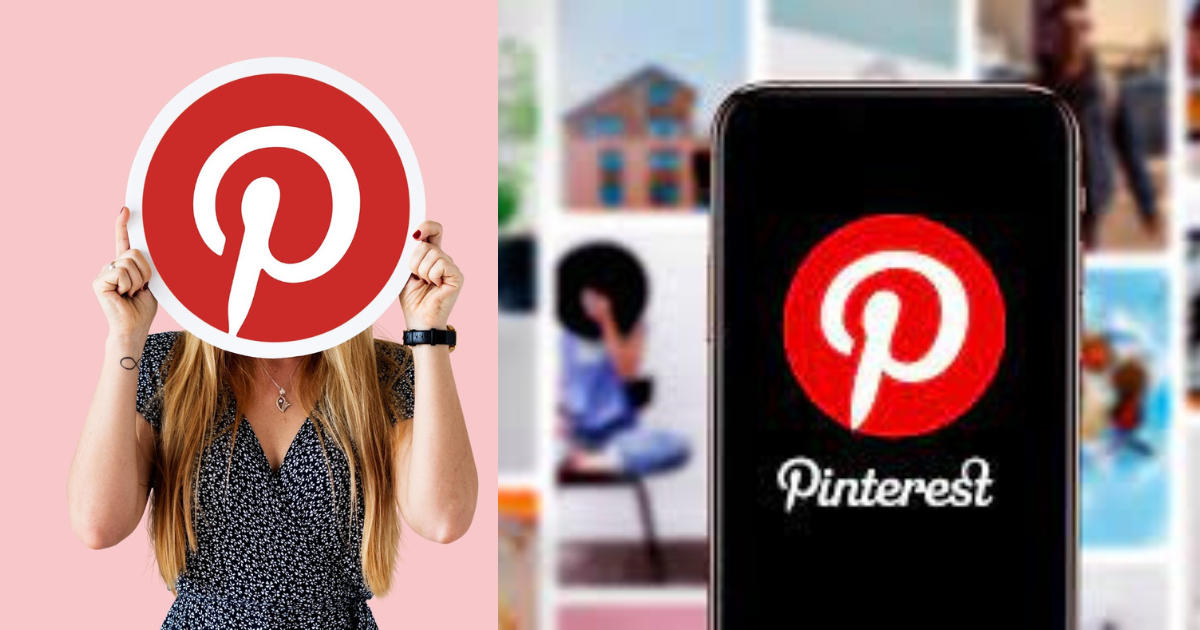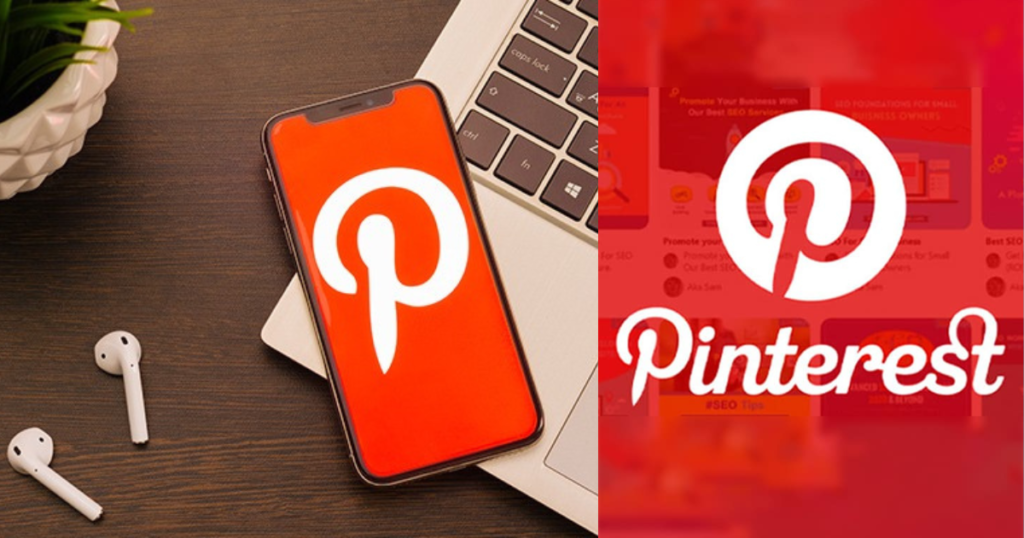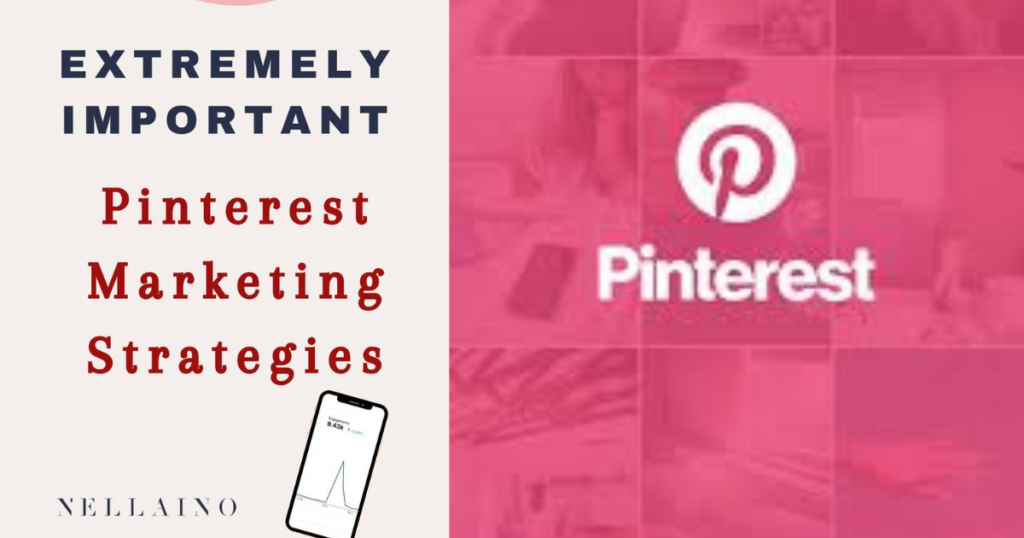

what is Pinterest marketing strategy
You might know Pinterest as a fun place to look for DIY crafts, home ideas, or recipes. Maybe you’ve used it yourself to save pictures or get inspiration. But Pinterest is more than just that. It’s growing fast and becoming a powerful platform for businesses and marketers. In fact, 85% of weekly Pinterest users say they’ve bought something they saw on a Pin. That’s why it’s a great tool for promoting your brand.
Pinterest marketing means using the platform to share content from your business. This can help people learn about your brand, visit your website, and even buy from you. Since many people use Pinterest to look for things they want to buy, it’s a smart way to reach new customers.
So, what is Pinterest exactly? Pinterest is a social media site that focuses on pictures and videos. People go there to get inspired. They may be looking for a new hobby, a birthday gift, a room design, or a fashion idea. It’s a visual search engine where people can save the things they love.
Pinterest works using Pins and Boards. A Pin is a post that can include a photo, a short text, and a link to a website. You can pin your own ideas or pin things from other users. Pins are saved into Boards, which are like folders. For example, you can create a board for home décor, another for travel ideas, and one for products your business sells
Simply Pinterest marketing strategy
If you want to grow your business on Pinterest, focus on sharing your own content. This includes your blog posts, product photos, and tips. Pinterest knows the content is yours if your website is connected. You don’t have to pin other people’s content. Just stay active. Even 1–5 pins a day is a good start. Tools like Tailwind can help you post regularly.
When you post something new, like a blog or product, pin it right away. Choose the best board that fits the topic. For example, a post about “school lunch ideas” can go into boards like “Healthy Lunches” or “Back-to-School Ideas.” You can pin to more than one board, but leave a few days between each pin.
Pinterest is all about pictures, so use good images. Make pins that are bright, clear, and vertical (like 1000×1500 pixels). Try to show your product being used. Add your logo neatly on the top or bottom. If your post fits a holiday or season, make the pin match that time. You can also add short text on the image to explain it.
Write good descriptions for your pins. Use simple words, include your brand name, and give a reason to click (like “Learn more” or “Get yours now”). Add keywords people search for, but don’t repeat them too much. Write up to 500 characters, and put the most important info at the start.
Keywords help people find your pins. Use them in your image, pin title, description, board name, and website. Most people search for ideas, not brand names. So use specific keywords like “easy dinner for kids” instead of just “dinner.”
After posting for some time, check your results. Go to Pinterest Analytics and look at “link clicks.” This shows how many people visited your website. You can see which pins worked best and do more like those.
To improve more, use long keywords (like “DIY dog birthday cake”). These are easier to rank for. Keep pin descriptions short and clear. Give just enough info to make people curious and include a call to action.
Make your profile look neat. Create simple board covers and update board descriptions using keywords. This helps users and Pinterest understand your content better.Always use vertical images because they show better in the feed. Try different designs to see what works best. Use a clear photo of yourself or your logo in your profile. It builds trust with people and brands.
Update your bio with keywords and explain what your Pinterest page is about. For example: “I help busy moms with fast meal ideas and home tips.”Make sure your pins stand out. Don’t copy others. If most pins are green, try using red. Find what your audience likes and use that in your Pinterest plan.
what is important of Pinterest marketing strategy

Pinterest is not just a social media app—it’s also a very helpful tool for businesses. It’s a place where people go to find ideas, learn new things, and get inspired. Many of them are looking for recipes, home designs, fashion tips, travel plans, and even products to buy. That’s why businesses can use Pinterest to show off their products and services in a way that feels natural and useful to users.
Business accounts on Pinterest get access to special tools. For example, you can see how your pins are doing, which ones are getting clicks, and how many people are seeing your content. You can also create ads, promote specific pins, and target your ideal audience. This helps you grow faster and smarter.
Pinterest is also perfect for storytelling through images. Since it’s a visual platform, businesses can share their brand story, show product uses, or offer tips and tutorials using attractive images and short texts. This builds trust and makes users more likely to click, save, or shop.
Many types of businesses can use Pinterest—clothing brands, food companies, travel agencies, online shops, beauty brands, and even service-based businesses like fitness coaches or digital marketers. Whether you sell products or offer services, Pinterest can help you reach the right audience.
In short, Pinterest gives you a creative, long-lasting, and low-cost way to share your message, attract new customers, and grow your business online. If your brand wants more visibility, traffic, and sales, Pinterest is a platform you shouldn’t ignore.
list of Pinterest marketing strategy
Pinterest profile. This means using a clear photo or logo, writing a short bio with the right keywords, and making sure your profile looks professional and inviting. Next, you should focus on making the right boards and pinning the right content. Your boards should be organized, easy to understand, and match your business or blog topics. You should also pin high-quality, useful content that your audience wants to see.
Another important part is knowing how to use your own content for the best results. This includes creating attractive pins, adding helpful descriptions, and saving them to the most relevant boards to get more views and clicks. The fourth step is curating and collaborating. This means sharing other helpful pins (not just your own) and joining group boards or working with others to grow your reach. Finally, the fifth step is analyzing your results. Use Pinterest Analytics to see what’s working, what’s not, and how you can improve your pins and boards to bring more traffic to your website.
Marketing expert Kate Ahl from Simple Pin Media also shared these strategies in a Facebook Live session, where she talked about real tips and insider tricks that many people don’t know. Whether you watch that video or read on, these five steps will help you create a winning Pinterest plan.
Pinterest marketing strategy2025
If your Pinterest account is ready and you understand how Pins, boards, and analytics work, it’s time to take your strategy to the next level in 2025. Pinterest users are always looking for new ideas, and there are a few main ways they can find your content. These include the search bar, visual search using Pinterest Lens, the home feed, related Pins, and shoppable Pins. To show up in these places, you need to use the right keywords that match your business.
Start by doing keyword research to find out what people are searching for. You can use Pinterest’s Explore section or look at their annual trends report to see what’s popular. Once you know the best keywords, use them in your Pin title, description, and board names. Also, add 2–3 hashtags to make your Pins more discoverable. When writing your description, aim for 100 to 300 characters, and keep it natural. Place your keywords near the beginning so people (and Pinterest) can quickly understand what your Pin is about.
Make sure to add a clear call to action. A call to action is a short message that tells people what to do next—like “Click to learn more,” “Shop now,” or “Sign up today.” This helps guide users to your website or content. Test different messages and see which ones bring the most engagement. A strong call to action can really help people connect with your brand.
Pinterest also releases a monthly marketing guide that shows the best times and topics to plan your posts. You can use this guide to match your content to what people are looking for each month—like skin care ideas in January or movie night ideas in summer.
Every brand’s Pinterest plan will look a little different, depending on what you sell. But don’t be afraid to try new things and get creative. For example, a car company could post about fun drive-in movie ideas, while a beauty brand could share tips for starting a fresh skin routine in the new year. When your content feels real and tells a story, more people will pay attention.
Another big trend in 2025 is the growing use of niche and long-tail keywords. People are now searching for more specific ideas instead of broad topics. Tools like Tailwind’s Keyword Finder can help you find the best terms for your audience. These keywords can help you write stronger Pin captions and descriptions that reach the right people.
With these tips, you’re ready to improve your Pinterest marketing in 2025 and make it your best year yet! Let me know if you want a short checklist or summary based on this.
Best pinterest marketing strategy

The best Pinterest marketing strategy is to focus on your own content, use strong keywords, and post regularly. Make beautiful vertical images with short, clear descriptions. Add keywords in your Pin titles, descriptions, and board names so people can find your posts. Always include a call to action like “Read more” or “Shop now” to guide users. Post new content often and use Pinterest Analytics to see what works best. Be creative, follow trends, and stay active to grow your reach and bring more traffic to your website
I want to share my biggest Pinterest strategy for 2025. It’s something new I learned from working on Pinterest in 2024, and I haven’t seen anyone else talk about it yet. I hope this idea helps everyone grow more in 2025.
I plan to treat Pinterest like it has two seasons: Grow and Maintain. The main goal is always to grow your account and do better than last year. Some months may be slower, but your yearly growth is what really matters.
From what I’ve seen with my clients, Pinterest traffic grows from mid-December to around June or July. But from August to November, traffic often stays the same or goes down. I’ve noticed this pattern before, but this year I’m changing my plan because of it.
So in 2025, I will split the year into two parts: the “Grow” season (December to July) and the “Maintain” season (August to November). This new strategy will help us plan better and keep growing over time.
Pinterest marketing strategy for increase traffic
Pinterest is often called a visual search engine, and it works differently from other social media platforms. It’s a great way to send people to your blog or website because it’s built around images and search.
Pinterest is all about visual content. Unlike platforms full of text, Pinterest focuses on eye-catching pictures called Pins. If your pins look good, people are more likely to click on them and visit your blog.
It’s also a search-driven platform. People use Pinterest to find ideas, answers, or inspiration. If you add the right keywords to your pin titles and descriptions, your content can show up in their search results.
One big advantage is that pins on Pinterest last a long time. Unlike Facebook or Twitter posts that disappear quickly, a good pin can bring traffic for months or even years after you post it.
Pinterest users are also there with a purpose—they’re ready to learn, plan, or buy. That’s great for blogs and businesses that offer helpful, informative content.
You can also use Rich Pins. These are special pins that show extra info like your blog title, a short description, and your name. This helps people know what they’ll see before they click, which makes them more likely to visit your site.
Another great feature is that you can organize your content into Boards. Each board can focus on one topic, like “Blogging Tips,” “Fashion Trends,” or “Healthy Recipes.” This helps users find exactly what they want.
Pinterest also gives you free analytics tools. These show you which pins are doing well so you can improve your strategy and focus on what your audience likes best.
With over 522 million users per month, Pinterest is not just for recipes and crafts—it’s also great for businesses in many fields. Many Pinterest users are from high-income homes, and they’re often looking for new products or ideas.
Pinterest is different from Google or Facebook. It allows for more creativity and storytelling, and people go there to discover new things. This makes it a perfect place to share your blog or business content.
In fact, Pinterest is one of the top sources of referral traffic online. It can send a lot of visitors to your website—much more than many other platforms.
And these users love to shop. Pinterest says 93% of its users have shopped online in the past 6 months. Buyers from Pinterest also spend more money, with the average order being over $50, which is higher than on other social platforms.
So, if you’re serious about growing your blog or business, Pinterest is a smart choice. It’s full of people ready to discover, learn, and shop. Now the question is: how will you bring that traffic to your site?
Pinterest marketing strategy for beginners
Putting your content on Pinterest is more than just uploading your favorite photos—it’s about knowing what works and how to reach the right audience. Pinterest is a visual platform made for sharing inspiring and useful ideas. People visit Pinterest to find everything from everyday tips to big life plans, like wedding ideas, home makeovers, or healthy recipes. You can post about anything meaningful to you, as long as it’s positive, helpful, and encourages people to try something new.
For example, you might share easy weeknight dinners, a favorite skincare routine, or a creative DIY project. With over 433 million people using Pinterest every month—many of them searching for things to buy—it’s a great place for bloggers, small businesses, and online creators to share content and grow their audience. If you understand how Pinterest marketing works, you can build a strategy that brings people to your website, helps your brand stand out, and increases your online sales.
FAQs
1. What kind of content should I post on Pinterest?
You can post anything that inspires or helps others—like recipes, DIY projects, beauty tips, or helpful guides. Just make sure it’s positive and useful.
2. Who uses Pinterest?
People who come to Pinterest are looking for ideas and products. Many want help with things like shopping, planning events, or learning new skills.
3. Can Pinterest help my blog or business?
Yes! Pinterest can send more people to your website. If you share great content with the right keywords, more people will find your blog, store, or services.
4. Is Pinterest good for selling products?
Yes, Pinterest is great for selling. Many users come with the intent to buy. If your product looks good and solves a problem, they may click and make a purchase
Conclusion:
Pinterest is more than just a place for pretty pictures—it’s a powerful tool for growing your blog or business. With millions of users searching for ideas, tips, and products every month, it offers a unique chance to reach people who are ready to learn, try, or buy. By sharing helpful and inspiring content, using the right keywords, and staying active, you can drive more traffic to your website and build a strong online presence. Whether you’re a blogger, small business owner, or content creator, Pinterest can help you connect with the right audience and achieve your goals



